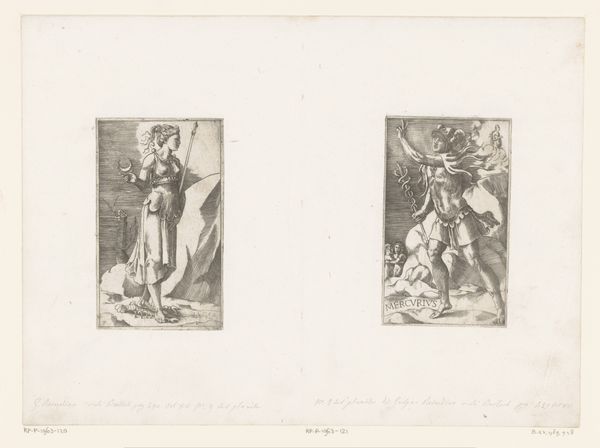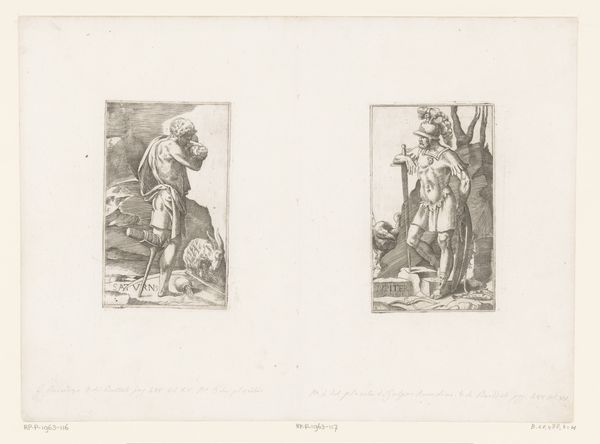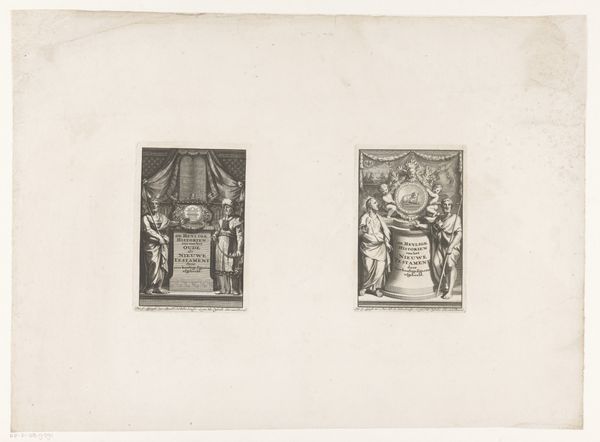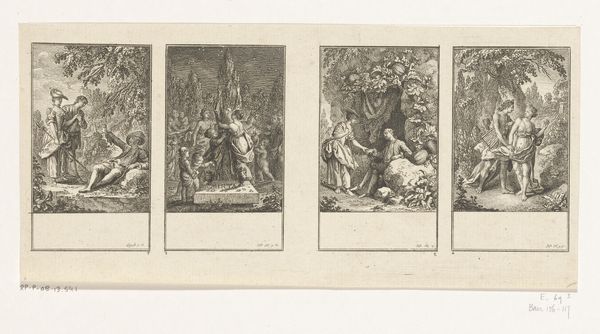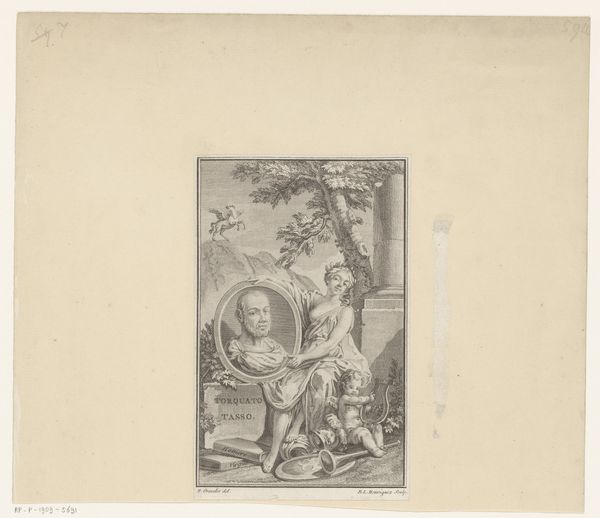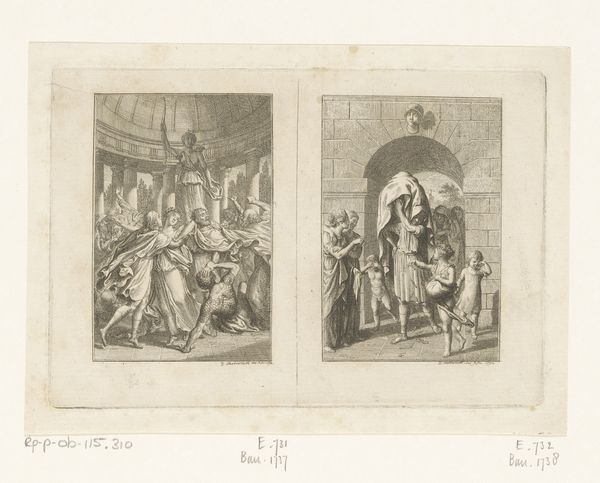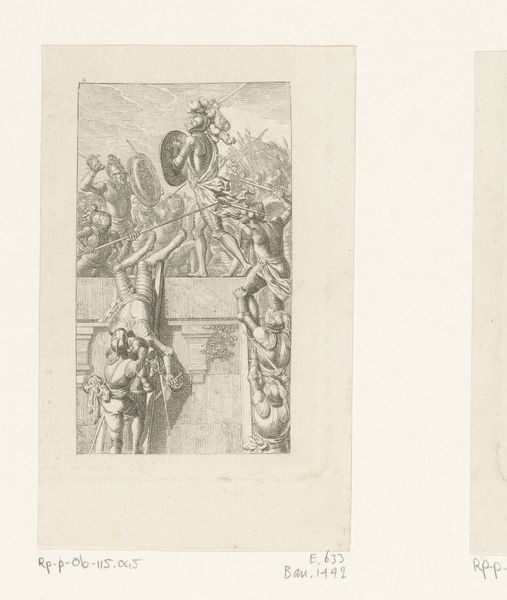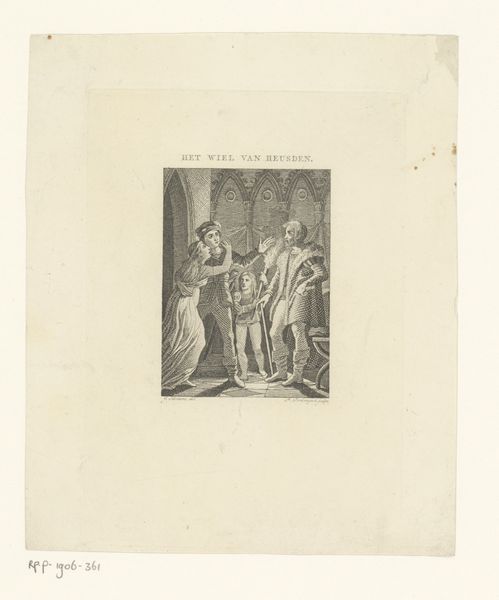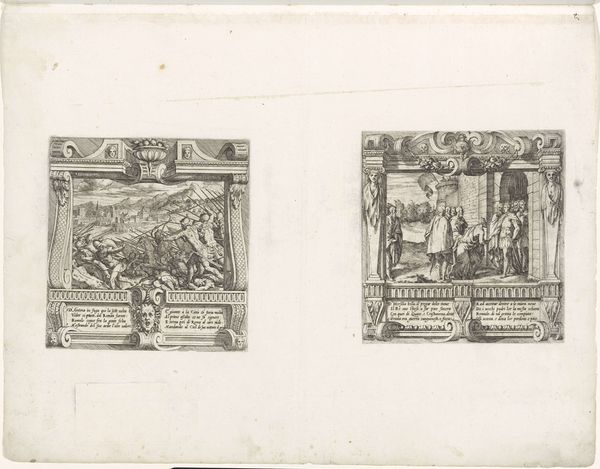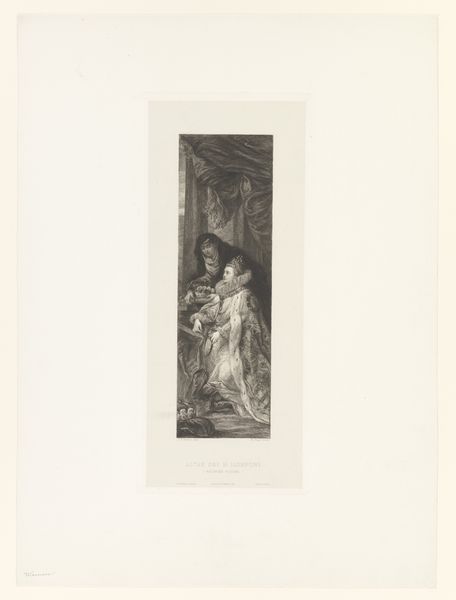
Apollo in wapenrusting omgeven door zonnestralen, naast hem een leeuw 1536 - 1569
0:00
0:00
georgesreverdy
Rijksmuseum
print, engraving
#
portrait
# print
#
mannerism
#
figuration
#
11_renaissance
#
history-painting
#
engraving
Dimensions: height 150 mm, width 92 mm
Copyright: Rijks Museum: Open Domain
This print of Apollo in armour, accompanied by a lion and sun rays, was created by Georges Reverdy sometime in the 16th century. It’s made with a technique called engraving, which involves carefully incising lines into a metal plate. Consider the sheer labor involved in creating such an image. Each line had to be meticulously carved, demanding immense skill and patience. The density of these lines creates the illusion of light and shadow, giving the figure of Apollo a powerful presence. Prints like these were not just artworks; they were also a means of disseminating knowledge and ideas in the Renaissance. They allowed for the mass production of images, making art accessible to a wider audience beyond the wealthy elite. This reflects a shift in the social status of art, moving from unique, commissioned pieces to more readily available objects of consumption. By appreciating the craft and the context, we gain a deeper understanding of the print’s significance, bridging the gap between artistry and social history.
Comments
No comments
Be the first to comment and join the conversation on the ultimate creative platform.
